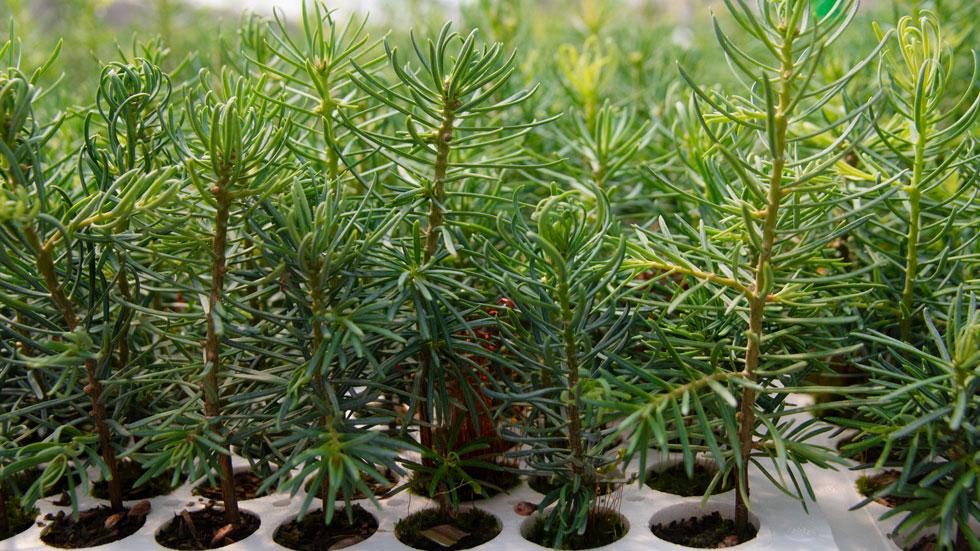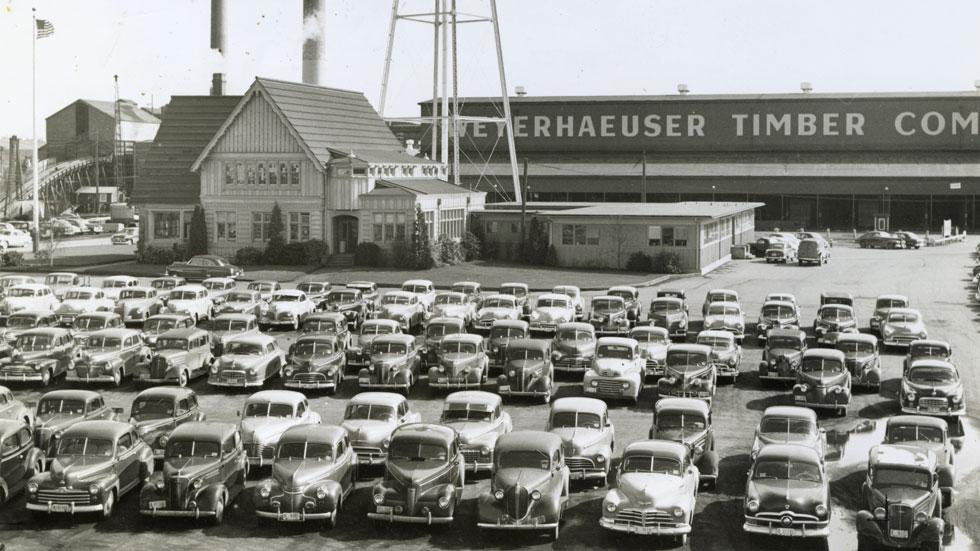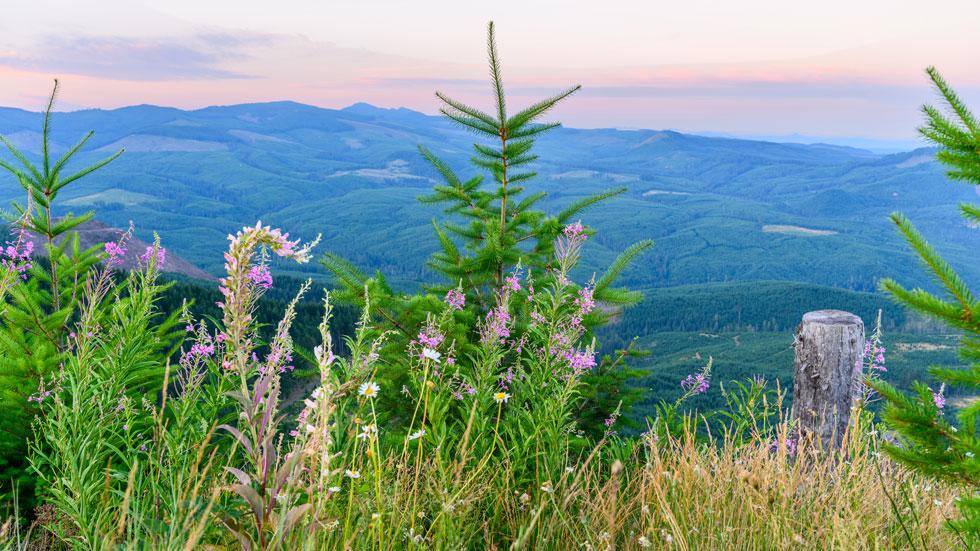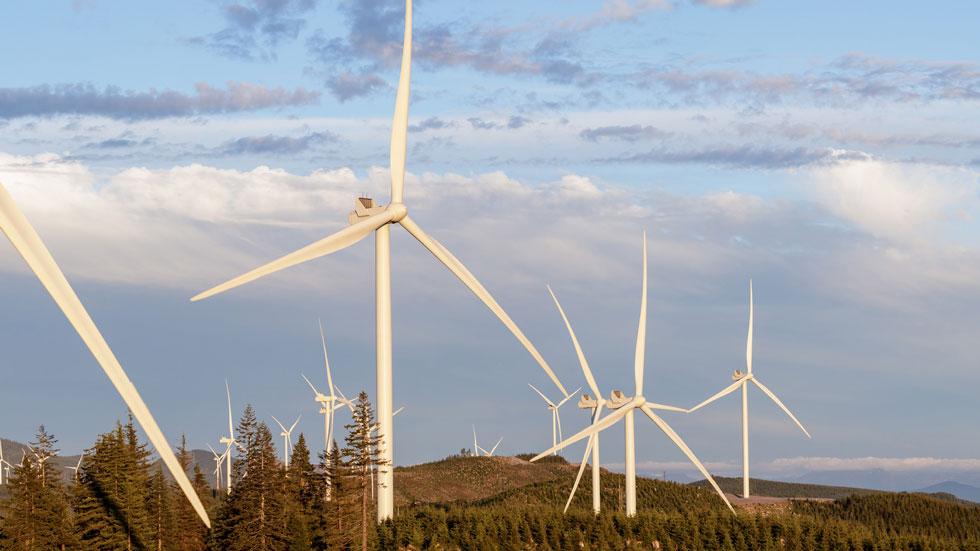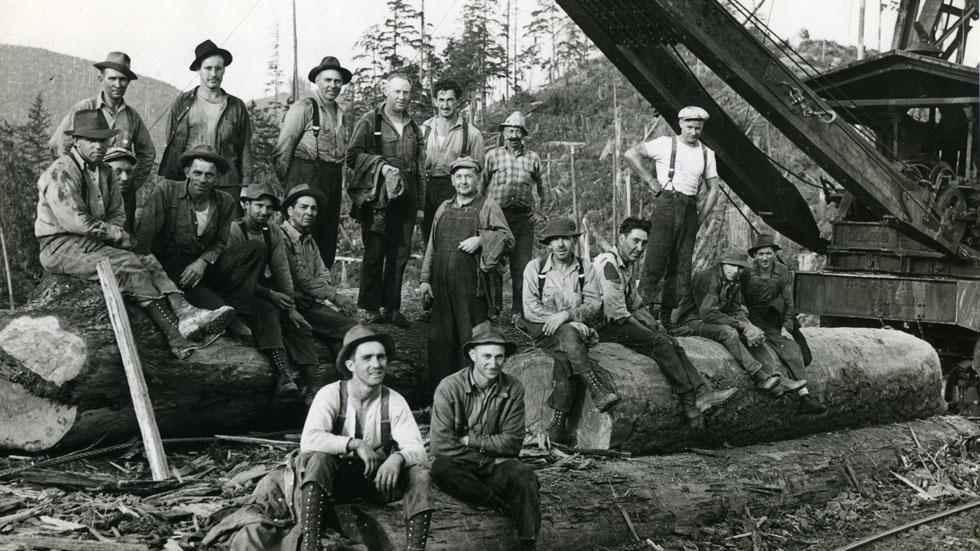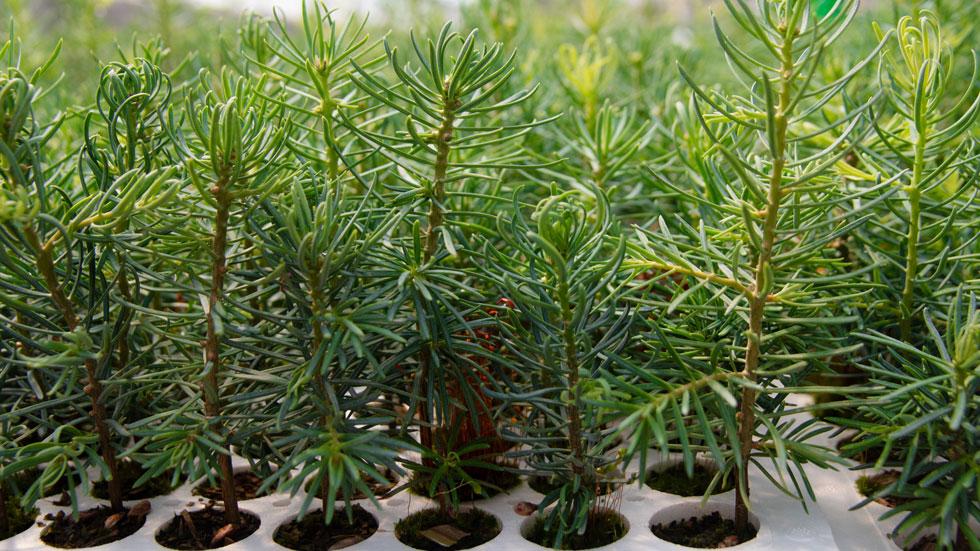
Weyerhaeuser (NYSE: WY) has come a long way since it was founded in 1900. From three employees and a small office in Tacoma, Washington, it has grown to become one of the largest sustainable forest products companies in the world. As it celebrates its 125th anniversary this year, Weyerhaeuser is building on that long legacy and looking ahead to the next stage of its evolving story.
Weyerhaeuser President and CEO Devin Stockfish says the company’s approach to respecting forests and everything they provide — from clean water and wildlife habitat to countless products that are essential to everyday life — has always set it apart. “Historically, logging companies would harvest and move on, but the Weyerhaeuser family thought of a different way to do it. That includes taking care of people, supporting communities, and sustainably managing forests.”
Indeed, when Frederick Weyerhaeuser Sr. bought 900,000 acres of forestland in Washington state at the turn of the 20th century from the Northern Pacific Railway—a transaction that at the time ranked as one of the largest private land transfers in the United States—he set the foundation for a new, long-term view of forestry. Engraved on the lobby wall at the REIT’s headquarters, his words serve as a constant reminder of the company’s purpose: “This is not for us, nor for our children, but for our grandchildren,”
“That commitment is one of the reasons we’ve been around for 125 years,” Stockfish says.
Resilience is Key
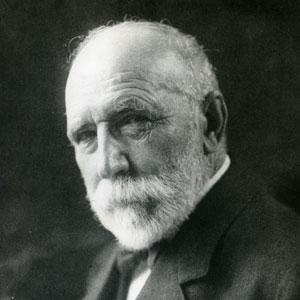
Days after that 1900 land purchase, Frederick Weyerhaeuser, along with 15 partners, founded the Weyerhaeuser Timber Company. At the time, Weyerhaeuser called the undertaking “exceedingly speculative,” given the operation’s long distance to lumber markets, according to 1965’s Timber and Men: The Weyerhaeuser Story.
For a half century after establishing its Northwest presence, Weyerhaeuser focused on regional and national expansion, including its first foray into the U.S. South in 1956, buying 90,000 acres of timberland in Mississippi and Alabama. The following year it added 460,000 acres in North Carolina, Virginia, and Maryland.
Renamed Weyerhaeuser Company in 1959, the company is now one of the largest private holders of timberlands in the world. In addition to timber and wood products manufacturing, Weyerhaeuser’s wide-ranging endeavors include real estate development and natural resources exploration.
The Seattle-based company is also seizing a new opportunity with emerging climate change solutions by leveraging its 10.4 million-acre U.S. forest footprint for renewable energy development, generating carbon credits and using subsurface rights for carbon capture and sequestration projects.
Weyerhaeuser’s highest concentration of U.S. forestland today is in the South, where it owns approximately 7 million acres stretching from southeastern Oklahoma through the Carolinas and up to West Virginia. It owns about 2.5 million acres in the Northwest and around 1 million acres in the Northeast, primarily in Maine. It also holds long-term licenses with the Canadian government covering 14 million acres.
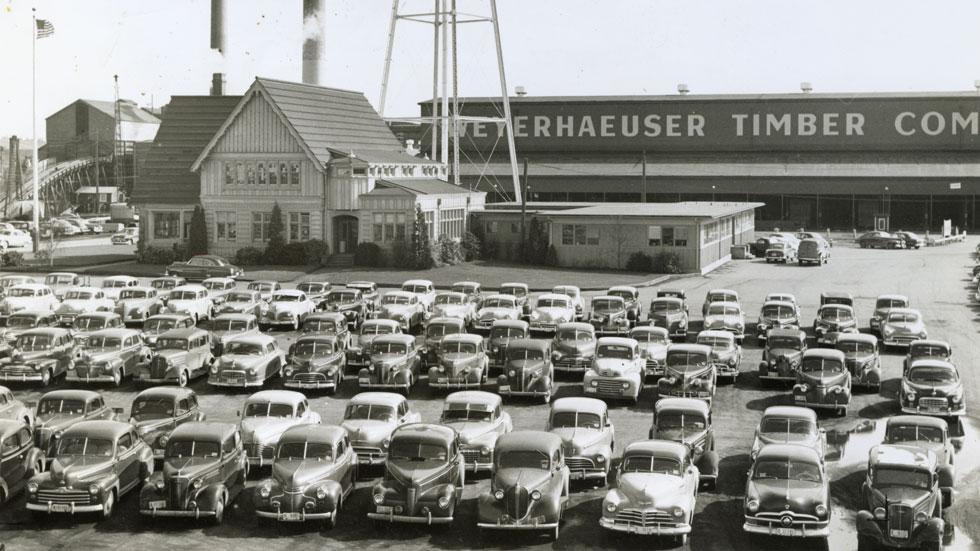
During its 125-year journey, Weyerhaeuser has weathered wars, economic downturns, pandemics, and other disruptions, including the eruption of Mount St. Helens in Washington in May 1980. The volcano swiftly destroyed 68,000 acres of timberland that the REIT had owned since 1900, though Weyerhaeuser quickly worked to replant the impacted acreage — and began harvesting those restored forests again just a few years ago.
“Disruptions like market changes, weather events, and technology advancements are par for the course,” Stockfish says. “The constant is having people with a resilient, can-do attitude that is needed to succeed in this industry.”
Portfolio Growth and Optimization
In 2021, Weyerhaeuser set a target to invest $1 billion in strategic timberlands transactions by the end of 2025. So far, the REIT has invested $775 million for nearly 252,000 acres of high-quality timberlands, primarily in the Carolinas, Mississippi, and Alabama.
Similar to commercial property REITs that continually recycle assets to assemble portfolios of higher-end buildings, Weyerhaeuser has sold roughly $1.1 billion in non-strategic forest land since 2020 for a net reduction of 680,000 acres — all while increasing the overall value, productivity, and cash flow of the acreage it owns.

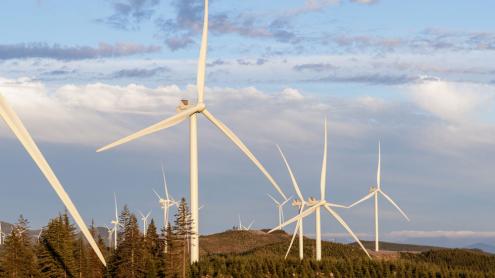
“For us, it’s not as much about the size of the portfolio as it is improving and optimizing the value of the portfolio,” Stockfish says, noting that investments in silviculture, seedling quality and survival, research, and other innovations have helped increase the earnings from the Timberlands business over time.
Weyerhaeuser’s expansion activities in the South also include plans to build a $500 million facility in southeast Arkansas to manufacture its TimberStrand® engineered wood products, which serve the residential homebuilding market, mass timber construction projects, and other industrial applications. Modeled after the REIT’s other TimberStrand® plant in Kenora, Ontario, the project will tap the region’s southern yellow pine species to produce up to 10 million cubic feet of TimberStrand® annually when it begins operating in 2027.
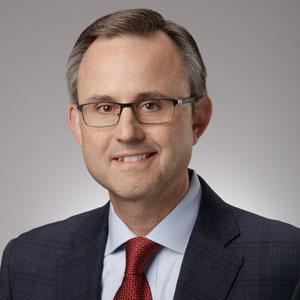
“This is the first time anyone has made this type of product from southern yellow pine,” Stockfish says. “It’s a good example of how our wood scientists help create an innovative and proprietary product.”
New Frontiers
Weyerhaeuser’s growth initiatives are part of a broader strategy to continually sharpen the company’s performance. As part of that effort, Weyerhaeuser has captured $117 million in operating improvements and is aiming to capture an additional $55 million to $130 million in margin benefits by the end of this year.
The REIT also has increased its base dividend by more than 5% annually over the past four years, which when combined with share repurchases resulted in more than $5.3 billion in cash returned to shareholders from 2021 to 2024.
Additionally, EBITDA related to Weyerhaeuser’s Natural Climate Solutions (NCS) business increased fourfold to $84 million in 2024 from 2020, and the company is targeting $100 million in annual EBITDA by the end of this year. Most of the NCS growth has come from conservation and mitigation banking, with a smaller amount from renewables. The company is also positioned to take full advantage of forest carbon and carbon capture and sequestration efforts.
In 2023, for instance, Weyerhaeuser collected $900,000 from its initial carbon credit project in Maine, in which it sold 32,000 credits in the voluntary market to help companies and other organizations meet net-zero commitments.
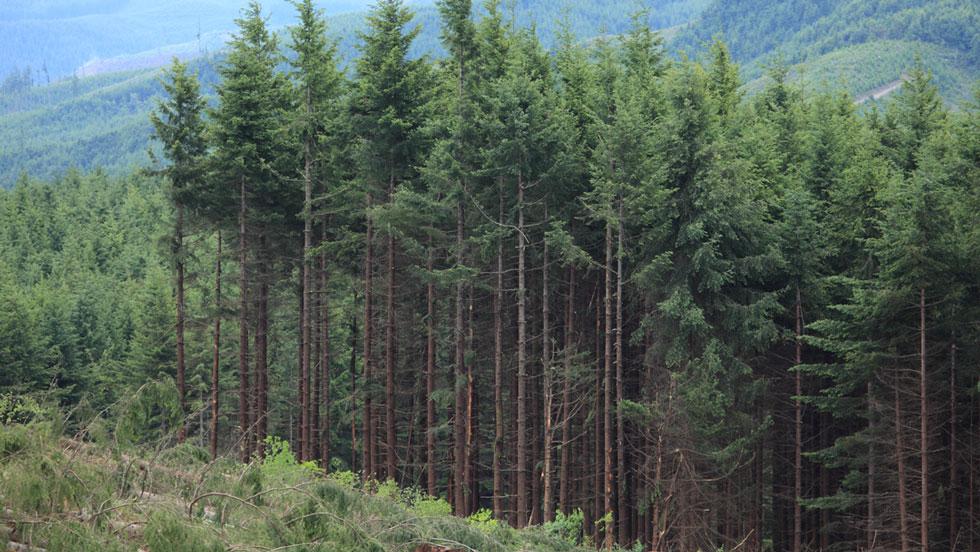
The company is currently developing carbon credit projects in the South, including a new project registered in Mississippi in 2024. Weyerhaeuser also sold its second issuance of credits in 2024 from the original Maine project for a per-credit price slightly higher than the $29 it received in 2023, Stockfish reports. Weyerhaeuser has several additional carbon credit initiatives in the pipeline.
“We should see a pretty significant uptick in carbon credit sales in 2025,” he notes. “I don’t think there is anyone else in our space with the portfolio and expertise to go after this opportunity at scale like Weyerhaeuser.”
Weyerhaeuser’s next big carbon opportunity is taking place under its forests, where it will lease pore space to industrial emitters for the permanent underground storage of carbon dioxide. Weyerhaeuser has identified 500,000 acres with suitable subsurface characteristics and so far has signed agreements with three developers for potential projects. An exploration agreement with Lapis Energy LP could result in multiple projects.
“Carbon capture is a component that we’re excited about, and I think it will be a fairly large piece of the business in the future,” Stockfish says. “But it’s going to take time to build out the infrastructure.”
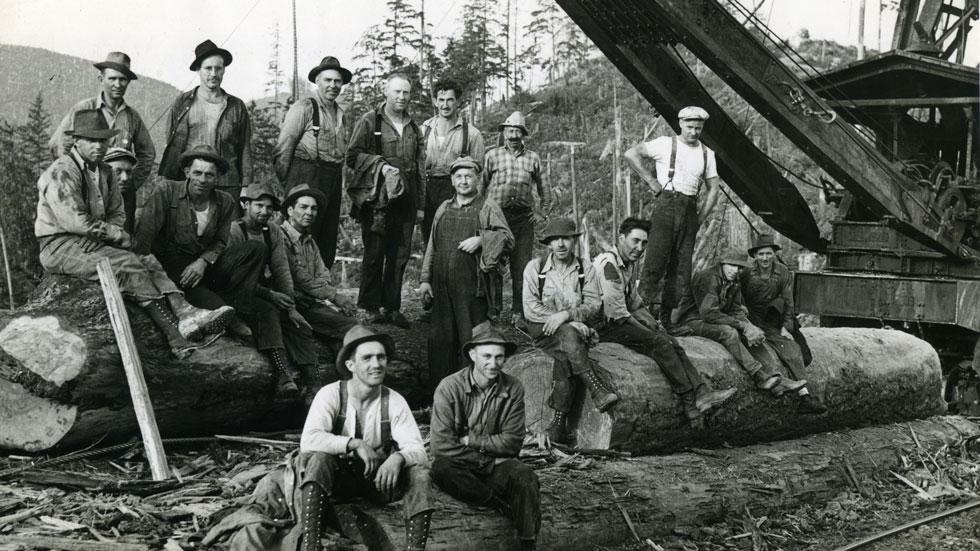
Back in 1900, it’s a safe bet that Frederick Weyerhaeuser couldn’t have foreseen making money by selling credits based on photosynthesis and burying carbon dioxide deep underground. To the extent the solutions prove effective, however, they will be in line with his focus on protecting the land for future generations.
“The management of forests is always going to be the core part of our business,” Stockfish says. “But it’s pretty exciting to think about opportunities to create incremental value in our Natural Climate Solutions business. It’s a business that didn’t even exist a few years ago, but it’s quickly becoming an important driver of growth for our company and also another way for us to make a positive impact on the world.”
